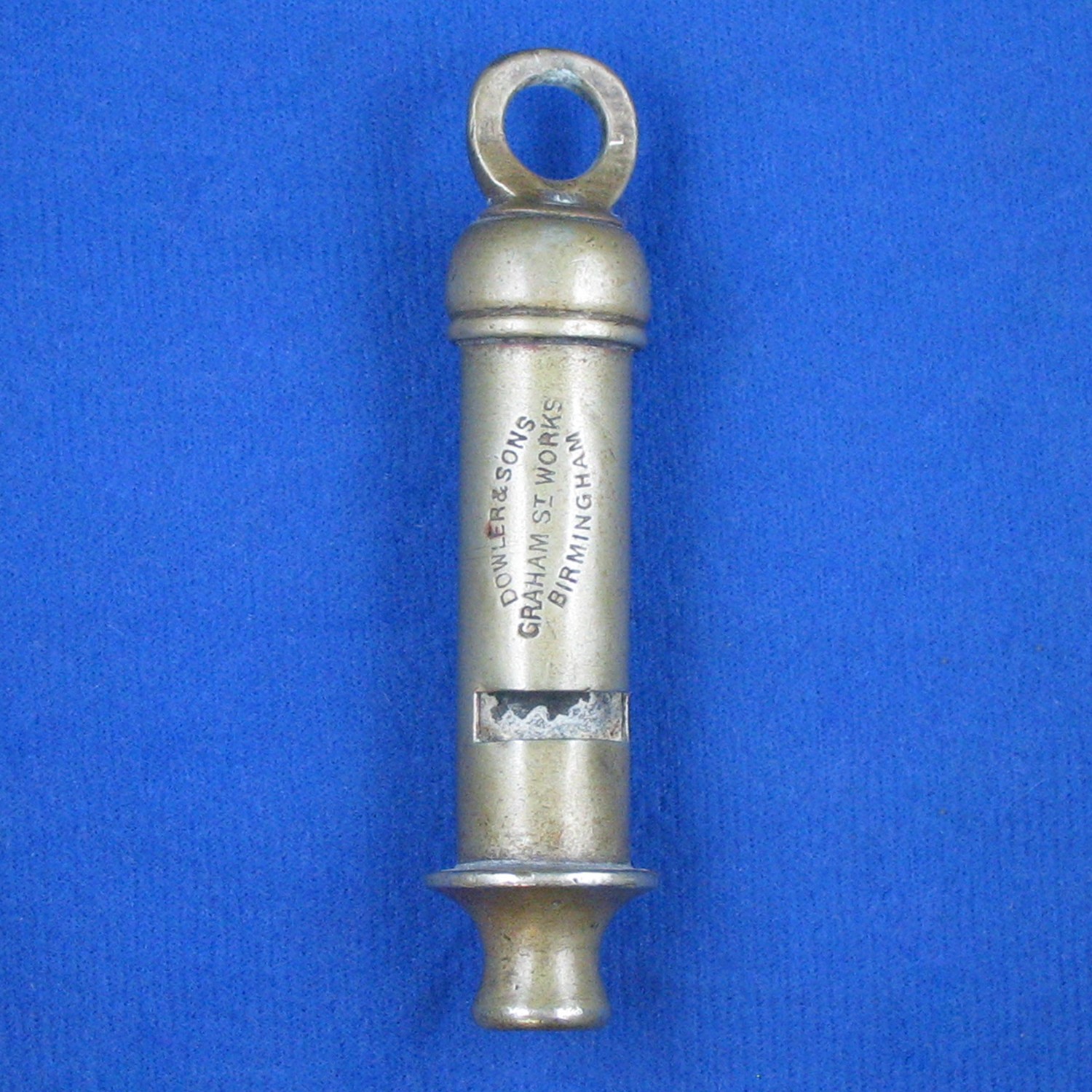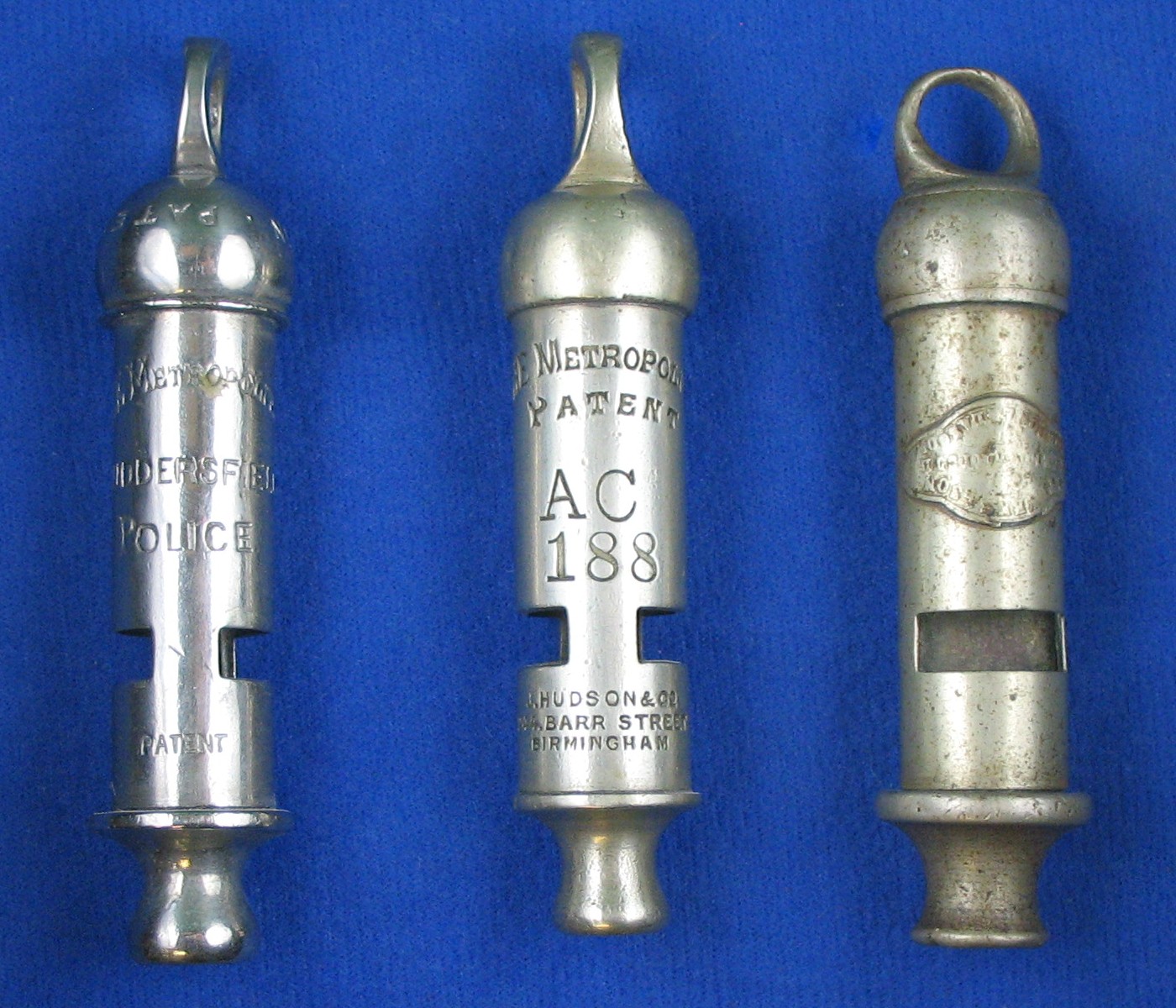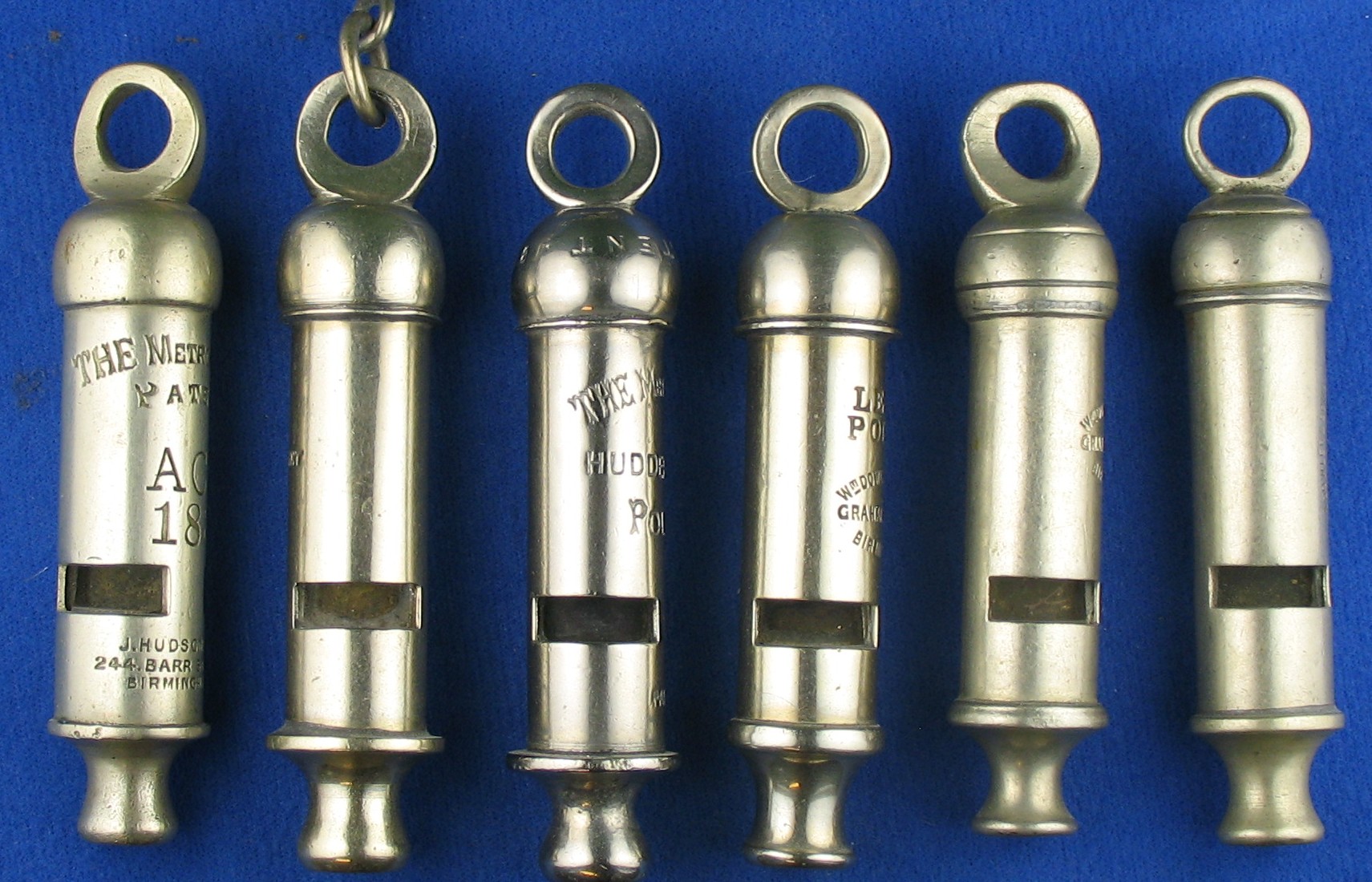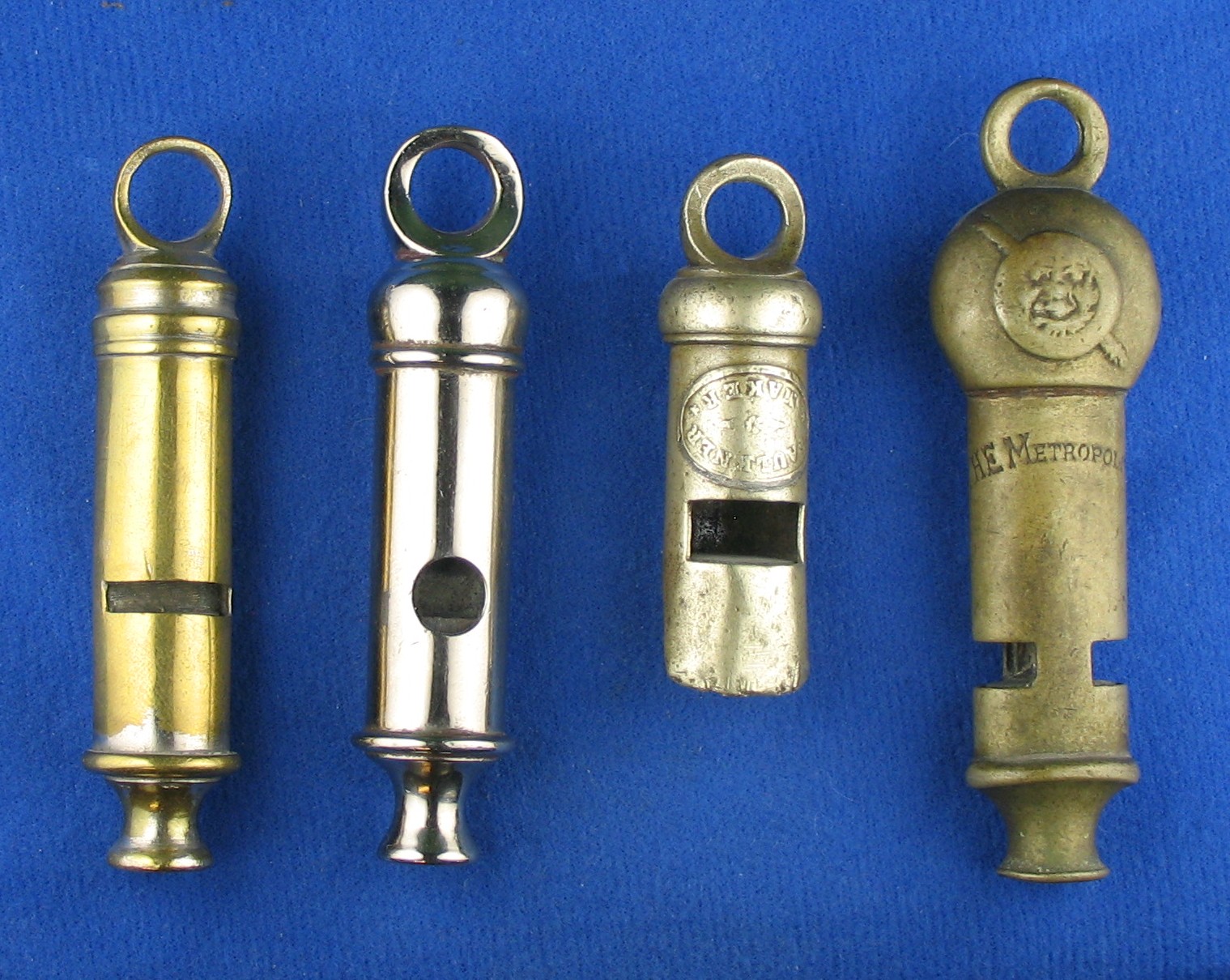Whistle Categories > Porteous Whistles

Where did Porteous whistles originate?
Porteous top is a name coined by Martyn Gilchrist for the tops of tube-shaped whistles with a bulbous top. Therefore, it would be from the UK, most likely manufactured under J. Stevens and Company in Southwark circa 1865.
Only four manufacturers took up this design, all emanating from Great Britain, especially Birmingham.
The tops are distinct enough to trace them back to this area.
No other countries used this top cap design. The closest to the Porteous top tube shaped whistles was rare round whistles designed by Porteous himself and Russian round whistles made for the military for decades starting post Crimean war times past the turn of the century.
How are Porteous whistles identified?
Each tube-shaped whistle in this category will have a very rounded top cap rather than a domed or flat top cap. Some will have Porteous whistle stamped on them, but usually not. Only four makers – Stevens, Dowler, Hudson and De Courcy made them.
The rounded or almost spherical top cap always has a loop above and is either a one piece cast top or tow piece made by Hudson circa 1909.
Porteous whistles made pre 1870 may have Porteous on a label attached to the side.
Why were they made?
Being nonfunctional top caps that did nothing to improve what was normally used, they were designed as artistic and perhaps a sign of quality. This set them aside for special use, but eventually were made for the public. The uses included police, public and cycling.
These give the whistle a bulkier heavy feel and quality and were an upgrade to the lighter almost generic looking whistle by comparison. Dowler took it a step further and made their mouthpieces heavier and even their chains to match and really make a high-quality whistle.



© – All photos with blue background property of The Whistle Gallery reference collection. Please contact The Whistle Gallery for permission of use of any website content. Use of photos without authorization is prohibited.











